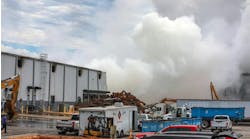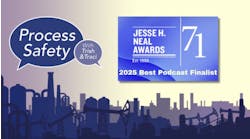On Jan. 26, 2024, the U.S. Occupational Safety and Health Administration (OSHA) issued updated enforcement guidance regarding compliance with OSHA’s standard for the Process Safety Management of Highly Hazardous Chemicals (PSM standard). The new directive, CPL 02-01-065, provides much-needed updates to the guidance issued in 1994 and explains OSHA’s current thinking regarding compliance with the PSM standard.
Background
The PSM standard, codified at 29 C.F.R. Section 1910.119, addresses a broad array of activities at facilities that manage large quantities of highly hazardous chemicals — the mismanagement of which could lead to accidents that could result in injuries and fatalities. The standard was first issued in February 1992 in response to multiple catastrophic chemical manufacturing incidents that occurred throughout the world. Employers are covered by the standard when they employ a process with a threshold quantity of a listed chemical or flammable material or manufacture explosives or pyrotechnics. Chemicals are listed under the standard because of toxicity and reactivity.
The PSM standard is very detailed and requires a comprehensive management program that anticipates integrating technologies, procedures and management practices to help ensure safe and healthful workplaces. OSHA believes the PSM standard has been effective in improving process safety in the United States and protecting workers from many of the hazards associated with uncontrolled releases of highly hazardous chemicals. Nonetheless, incidents have continued to occur, and OSHA’s issuance of the enforcement guidance is a reminder that compliance with the standard is essential and a top OSHA priority.
OSHA has issued regulatory Letters of Interpretation over the years since the standard was issued that reflect the agency’s interpretation of the standard in described scenarios. Regulated entities routinely read and rely upon these letters, even though OSHA makes it clear they are not enforceable and do not have the force and effect of a regulation.
The new guidance is designed for use by OSHA inspectors, which is typical of government-issued guidance. Many in industry find it helpful to know how enforcement officials approach in-person inspections and often format their own compliance programs based on these enforcement documents. The new guidance is presented in an easy-to-read Q&A format. The questions and answers are drawn from, among other sources, the interpretation letters prepared by OSHA on the PSM standard over the last three decades.
The new guidance excludes the Appendix A Program Quality Verification (PQV) Audit Checklist in OSHA Instruction CPL 02-02-045A, but does cover existing PSM enforcement policies, repurposed in a Q&A format.
The guidance is careful to note that “OSHA personnel should exercise professional judgment consistent with their authority as appropriate when particular circumstances necessitate a deviation from the guidance provided in the instruction in order to effectuate the purposes of the Occupational Safety and Health Act (OSH Act), to utilize resources to effectively administer the OSH Act, or to ensure [Certified Safety and Health Official (CSHO)] safety.” This language is routinely added to government-issued guidance and serves as a reminder that enforcement personnel have inherent discretion to deviate from guidance.
Finally, the guidance includes many useful URL links to reference materials, Federal Register notices, Letters of Interpretation, cases and other documents.
Discussion
The new guidance is quite helpful. Given its Q&A format, numerous URL links, and organization by standard section, it is useful and clearly written. Some have speculated the removal of the instructions from the 1994 directive and direction to the 2017 national emphasis program for process safety will invite inconsistent enforcement results. Whether this proves to be the case remains to be seen.
Readers should remember these “guidance” documents are just that, not law. The instruction, in fact, explicitly notes that it “is not a standard, regulation or any other type of substantive rule. No statement in this instruction should be construed to require the regulated community to adopt any practices, means, methods, operations or processes beyond those which are already required by the OSH Act or standards and regulations promulgated under the OSA Act.”
That said, inspectors can, on occasion, be overly enthusiastic in measuring compliance against the guidance and not the underlying law or regulation. Regulated entities should be clear in those events with the inspector that the guidance has no force or effect as an enforceable standard or rule. Always, when in doubt, consult an attorney.



